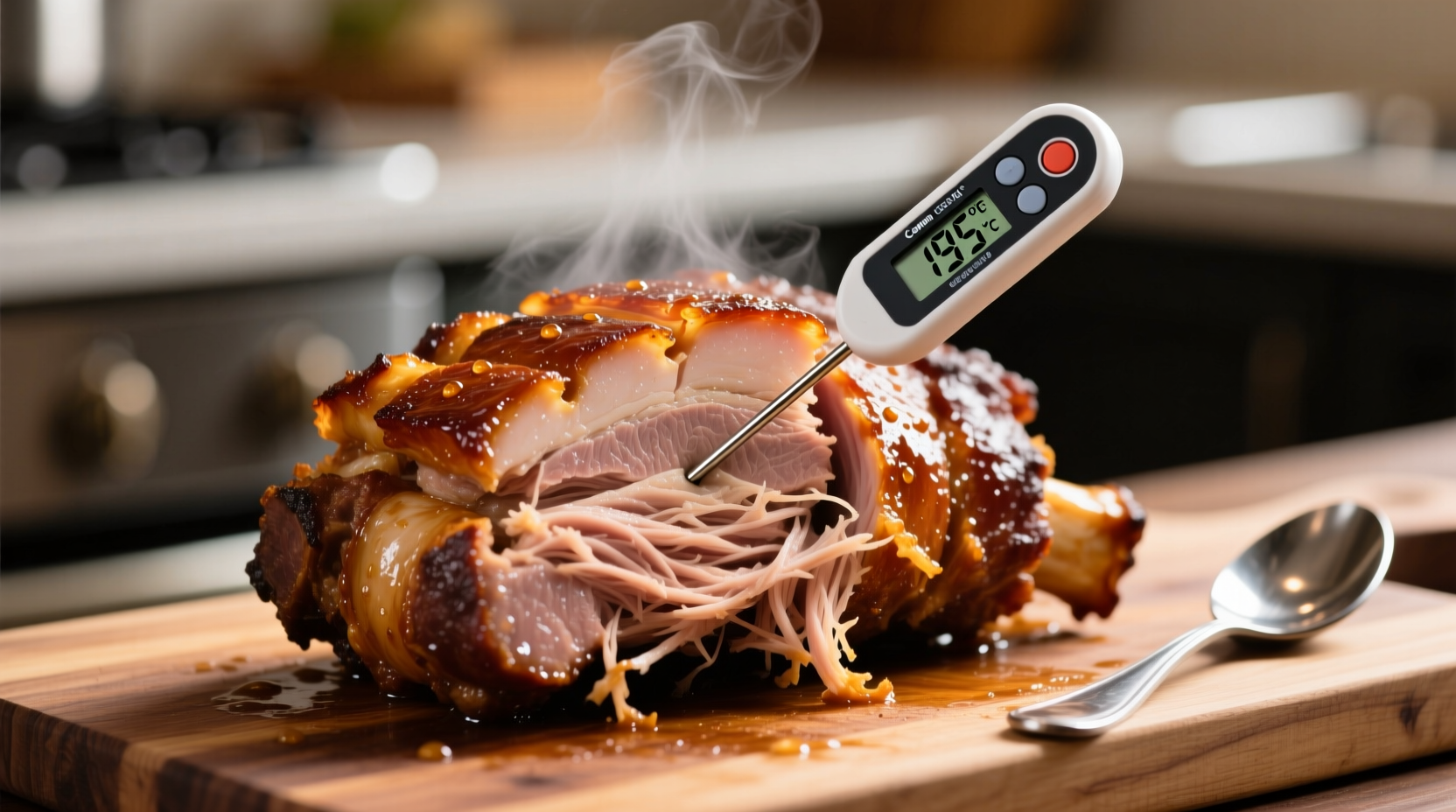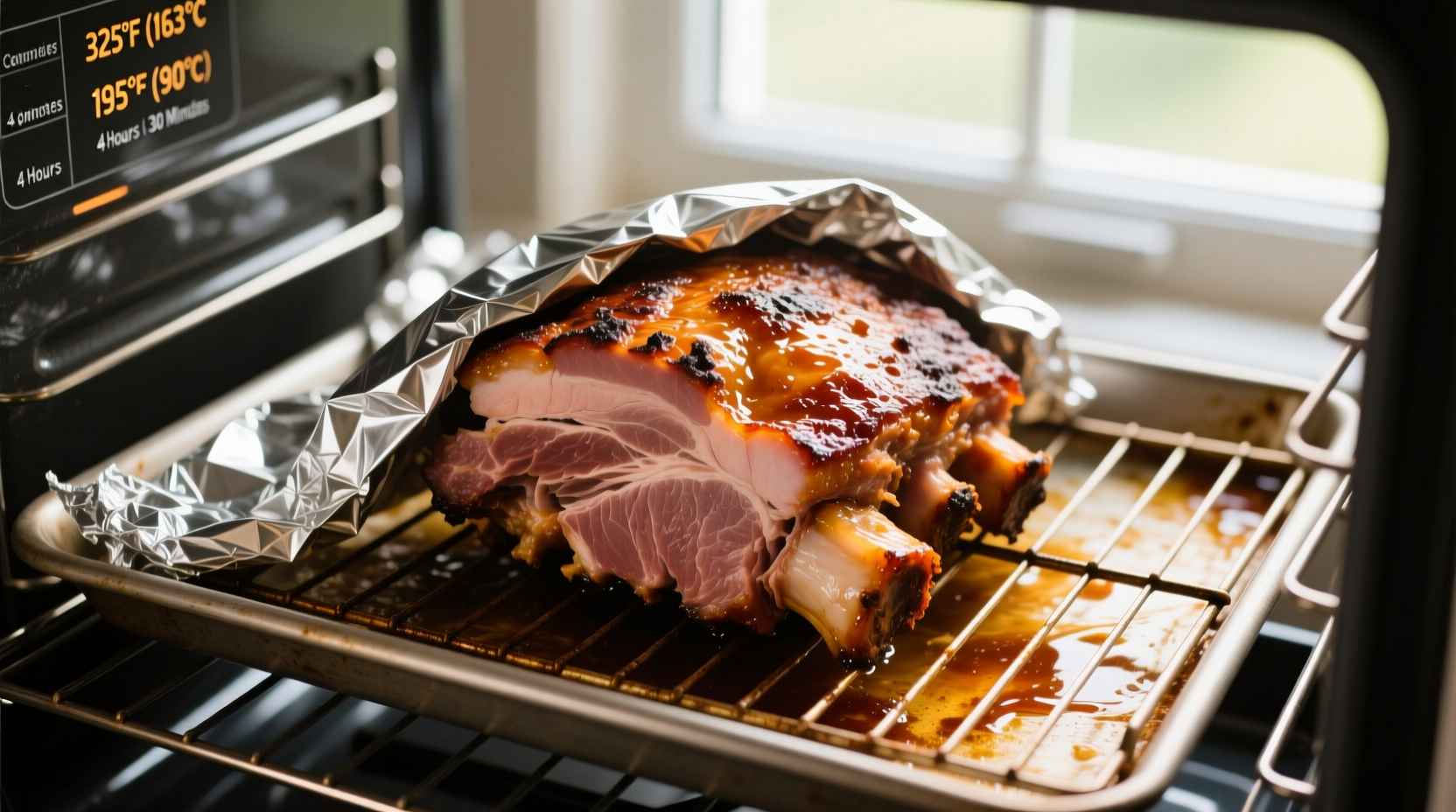Cook pork butt in the oven for 1.5 hours per pound at 225°F (107°C), reaching an internal temperature of 195-205°F (90-96°C) for perfect shredding. Total cooking time typically ranges from 8-12 hours depending on size.
Discover exactly how long to cook pork butt in oven to achieve melt-in-your-mouth pulled pork perfection every time. This comprehensive guide delivers precise timing, temperature control, and doneness indicators—no guesswork required. Whether you're preparing your first pork butt or refining your technique, you'll learn the science behind slow roasting, avoid common pitfalls, and serve restaurant-quality results from your home kitchen.
Why Oven-Cooked Pork Butt Requires Precision Timing
Pork butt (also called Boston butt) comes from the shoulder of the pig, containing abundant connective tissue that needs proper breakdown. Cooking it correctly transforms tough collagen into gelatin, creating that signature pulled texture. Undercooking leaves it chewy; overcooking dries it out. The USDA Food Safety and Inspection Service confirms pork is safe at 145°F, but for pulled pork, you need to go much higher—195-205°F—to fully render the fat and connective tissue.
| Pork Butt Weight | Recommended Oven Time | Target Internal Temp |
|---|---|---|
| 4-5 lbs | 6-8 hours | 195-205°F |
| 6-8 lbs | 8-10 hours | 195-205°F |
| 9-12 lbs | 10-12 hours | 195-205°F |
This cooking time comparison table reflects data from America's Test Kitchen and USDA guidelines. Note that actual cooking duration varies based on your oven's accuracy, starting meat temperature, and whether you wrap the meat during cooking.
Preparation Phase: Setting Up for Success
Before you even preheat your oven, proper preparation ensures optimal results for how long to cook pork butt in oven:
- Pat dry thoroughly with paper towels to promote better bark formation
- Apply generous seasoning (salt, pepper, garlic powder minimum) at least 1 hour before cooking
- Bring to room temperature for 30-60 minutes before placing in oven
- Use a reliable oven thermometer as built-in thermostats often vary by 25°F+
Professional chefs at the Culinary Institute of America emphasize that proper seasoning penetration and temperature stabilization before cooking significantly impacts final texture and flavor development.
Cooking Process: The Critical Temperature Journey
Understanding the temperature plateau ("the stall") between 150-170°F is crucial when determining how long to cook pork butt in oven. During this phase, evaporative cooling keeps the internal temperature stable for hours as moisture leaves the meat.
- Preheat oven to 225°F (107°C) – never higher for proper collagen breakdown
- Place pork butt fat-side up on a wire rack over a roasting pan
- Insert probe thermometer into thickest part, avoiding bone
- Cook uncovered until internal temperature reaches 165°F (approx. 5-6 hours)
- Optional wrap in butcher paper or foil when entering the stall to speed cooking
- Continue cooking until reaching 195-205°F internal temperature

Doneness Indicators Beyond Time and Temperature
While knowing how long to cook pork butt in oven provides a framework, these visual and tactile cues confirm perfect doneness:
- Probe test: Thermometer probe slides in and out with almost no resistance
- Collagen breakdown: Meat visibly pulls away from the bone
- Texture: When gently squeezed, the meat readily separates into strands
- Jiggle test: Entire roast wobbles when nudged with tongs
According to research published in the Journal of Food Science, connective tissue fully converts to gelatin between 195-205°F. Cooking beyond 205°F risks drying out the meat, while stopping below 195°F leaves it too firm for proper pulling.
Resting and Serving: Completing the Process
Never skip resting when cooking pork butt—this critical step impacts moisture retention:
- Rest wrapped in butcher paper or foil for 1-2 hours in a cooler or warm oven
- Don't rush—this allows juices to redistribute throughout the meat
- Shred properly—pull with forks against the grain for optimal texture
- Serve immediately—pulled pork dries out quickly once shredded
Troubleshooting Common Pork Butt Problems
Even when following precise how long to cook pork butt in oven guidelines, issues can arise:
- Dry meat: Usually from cooking too high a temperature or not resting properly
- Tough texture: Didn't reach proper internal temperature (below 195°F)
- Burnt exterior: Oven running too hot or insufficient fat cap protection
- Extended stall: Humid kitchen environment prolonging evaporative cooling
Context boundaries matter significantly when applying cooking time guidelines. These timing recommendations apply specifically to conventional ovens—convection ovens may require 25°F lower temperature settings. Altitude also affects cooking times, with higher elevations requiring longer durations due to lower boiling points.
Perfect Pulled Pork Every Time
Mastering how long to cook pork butt in oven transforms a tough cut into culinary magic. Remember that time is merely a guideline—internal temperature and physical indicators provide the true measure of doneness. With proper preparation, patient cooking, and adequate resting, you'll consistently produce succulent pulled pork that falls apart effortlessly. This technique works whether you're cooking a modest 5-pound roast for family dinner or a massive 12-pound specimen for a gathering. The key is respecting the process and understanding the science behind slow roasting connective tissue-rich cuts.











 浙公网安备
33010002000092号
浙公网安备
33010002000092号 浙B2-20120091-4
浙B2-20120091-4